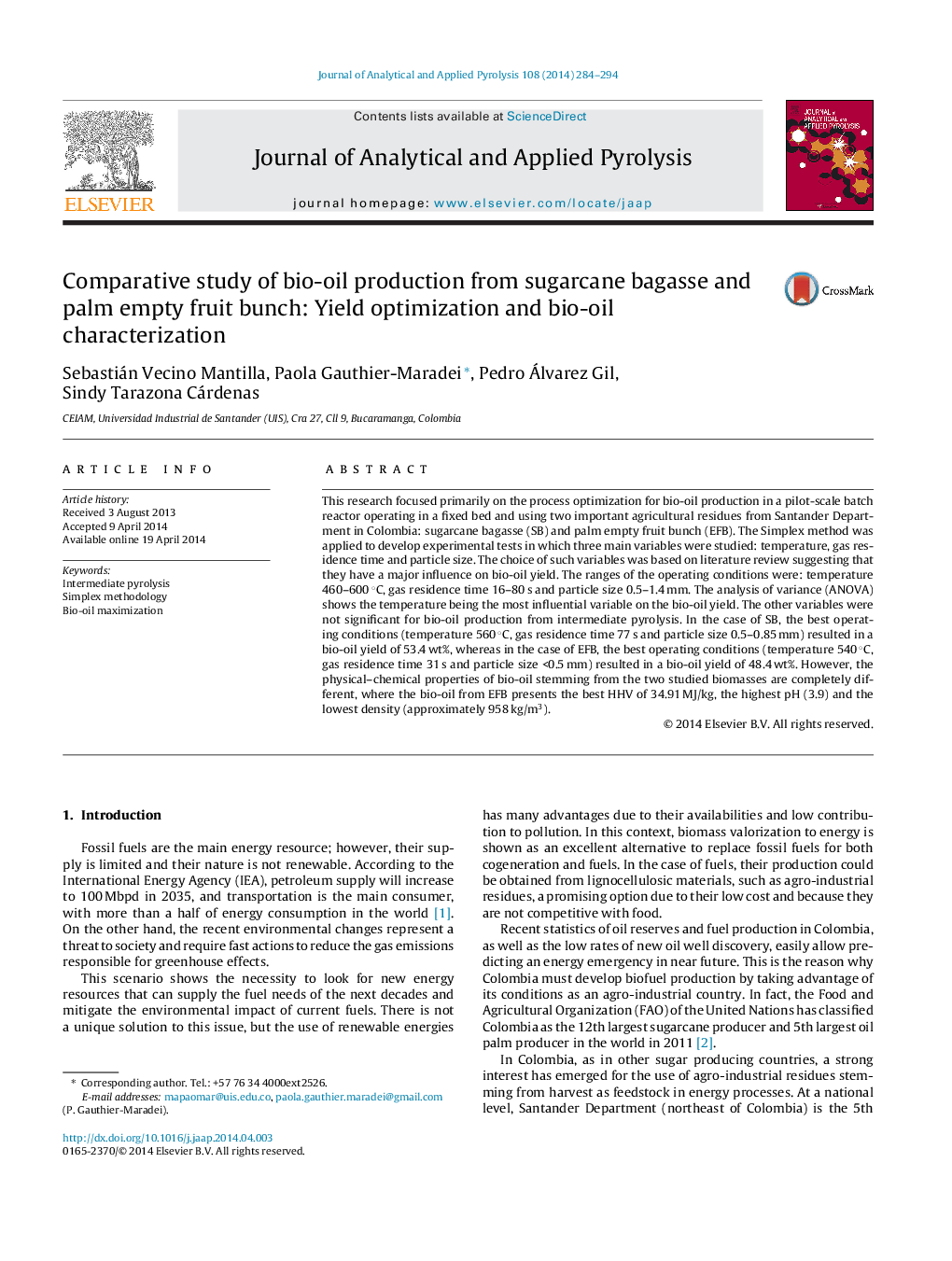| کد مقاله | کد نشریه | سال انتشار | مقاله انگلیسی | نسخه تمام متن |
|---|---|---|---|---|
| 1196686 | 1492969 | 2014 | 11 صفحه PDF | دانلود رایگان |
• Simplex methodology has been used to maximize bio-oil production.
• The most important variable to determine the bio-oil yield is temperature.
• The gas residence time is not a significance variable to maximize bio-oil production.
• The bio-oil produced from EFB pyrolysis has a higher HHV (34.91 MJ/kg).
• The bio-oil produced from EFB pyrolysis is a biofuel with good properties.
This research focused primarily on the process optimization for bio-oil production in a pilot-scale batch reactor operating in a fixed bed and using two important agricultural residues from Santander Department in Colombia: sugarcane bagasse (SB) and palm empty fruit bunch (EFB). The Simplex method was applied to develop experimental tests in which three main variables were studied: temperature, gas residence time and particle size. The choice of such variables was based on literature review suggesting that they have a major influence on bio-oil yield. The ranges of the operating conditions were: temperature 460–600 °C, gas residence time 16–80 s and particle size 0.5–1.4 mm. The analysis of variance (ANOVA) shows the temperature being the most influential variable on the bio-oil yield. The other variables were not significant for bio-oil production from intermediate pyrolysis. In the case of SB, the best operating conditions (temperature 560 °C, gas residence time 77 s and particle size 0.5–0.85 mm) resulted in a bio-oil yield of 53.4 wt%, whereas in the case of EFB, the best operating conditions (temperature 540 °C, gas residence time 31 s and particle size <0.5 mm) resulted in a bio-oil yield of 48.4 wt%. However, the physical–chemical properties of bio-oil stemming from the two studied biomasses are completely different, where the bio-oil from EFB presents the best HHV of 34.91 MJ/kg, the highest pH (3.9) and the lowest density (approximately 958 kg/m3).
Journal: Journal of Analytical and Applied Pyrolysis - Volume 108, July 2014, Pages 284–294
